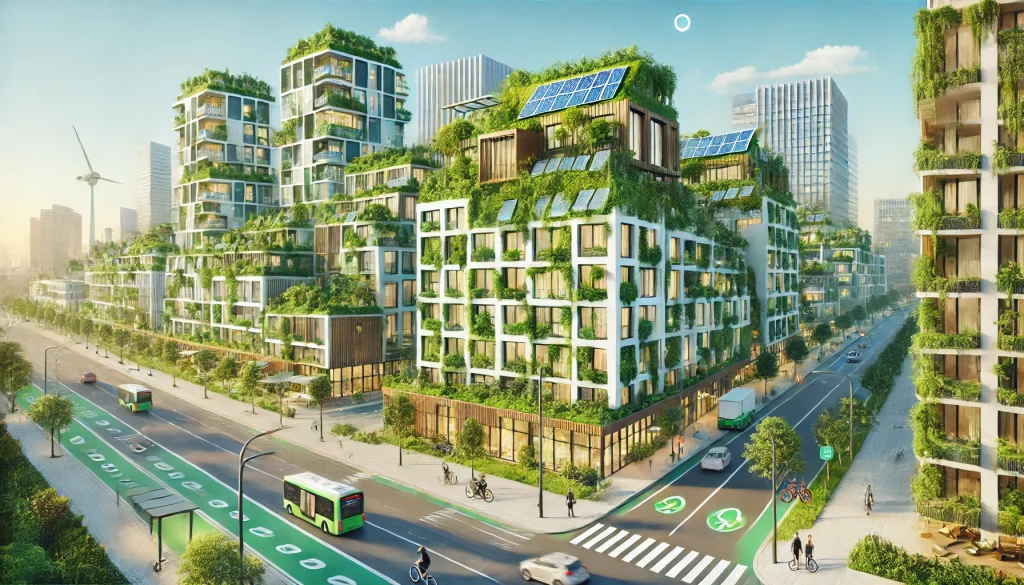In today’s world, energy efficiency and sustainability are key components in the design of modern infrastructure. The Green Buildings – Basics course, published in September 2024, introduces these principles to beginners interested in the future of sustainable architecture and engineering. Whether you’re an engineering graduate or a seasoned professional in construction, this course offers valuable insights into creating energy-efficient buildings that minimize environmental impact while ensuring indoor comfort.
Course Overview
The Green Buildings – Basics course is designed to equip learners with essential knowledge about heating, ventilation, and air conditioning (HVAC) systems, energy-efficient technologies, and sustainable building practices. The focus is on reducing energy consumption in buildings through advanced design techniques and materials, passive ventilation methods, and cutting-edge heating and cooling systems.
One of the standout features of this course is its comprehensive approach to understanding green buildings. You’ll learn how to calculate the heating and cooling loads for a building, implement ventilation techniques for commercial spaces, and explore the working principles of chiller plants. Additionally, a case study on thermal design will help bring all these concepts together, giving students real-world applications of what they’ve learned.
This course is not just limited to engineers but is also useful for architects, interior designers, and sustainability professionals who want to improve their understanding of energy-efficient technologies. The course requires no prior knowledge, making it accessible to a diverse range of learners. Topics are covered progressively, ensuring that beginners can easily follow along.
What You’ll Learn:
- Importance of Green Buildings: Understand the necessity of energy-efficient and sustainable structures in today’s world.
- Heating and Cooling Load Estimation: Learn methods to calculate the required heating and cooling loads for various spaces.
- Ventilation Techniques: Implement different strategies for ensuring proper ventilation in commercial buildings.
- Chiller Plant Working: Gain knowledge about the principles and applications of chiller plants across different industries.
By the end of the course, students will be well-prepared to design or retrofit buildings to reduce their carbon footprint, cut down on energy costs, and contribute to a more sustainable future. A practical understanding of energy simulation tools will allow learners to evaluate the efficiency of building designs and identify areas where improvements can be made.
Course Structure:
The Green Buildings – Basics course is split into five concise sections, each with lectures and quizzes to reinforce your understanding:
- Welcome Note (3m 50s)
- Introduction to Efficient Buildings and Orientation (18m 47s) – Includes an overview of building orientation strategies.
- Heating and Cooling Load Calculation (26m 35s) – Focuses on the methods to estimate cooling loads.
- Chiller Plant Mechanism (16m 36s) – Breaks down the components and working principles of a chiller plant.
- Vapour Absorption System (VARS) Operation (5m 29s) – Delves into the functioning of VARS in modern systems.
Course Feedback:
Learners have found the Green Buildings – Basics course informative and well-structured, particularly praising the clear explanations of complex topics. Many noted that the instructor’s knowledge and teaching style helped demystify the basics of green building design. Reviews mentioned the course’s accessibility for beginners, with students appreciating how each concept was broken down into easily digestible sections. The Q&A sessions were highlighted as especially useful, providing students with opportunities to clarify doubts and deepen their understanding.
Conclusion:
For anyone looking to explore sustainable building design, the Green Buildings – Basics course offers a robust foundation. It covers the fundamentals of energy efficiency in buildings, from HVAC systems to chiller plant operations, all within a concise, beginner-friendly format. Whether you’re starting a career in sustainability or enhancing your current skill set, this course provides practical knowledge that will be relevant for years to come.




